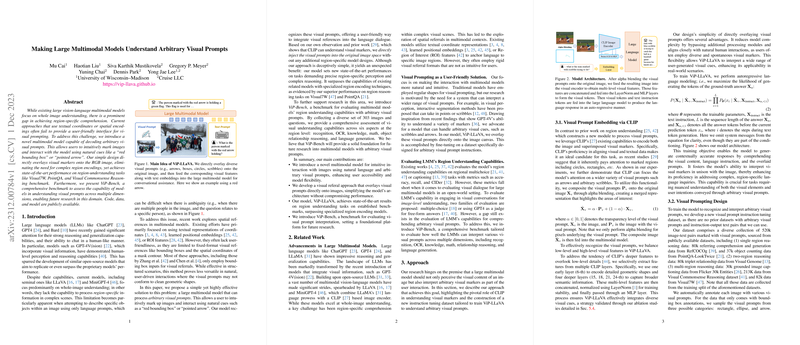Enhancing Multimodal AI with Intuitive Visual Prompts
Interacting with AI Using Visual Cues
Modern AI systems excel at processing entire images, yet they often struggle with understanding specific regions within an image. To address this, a novel approach has been developed that allows users to use visual prompts such as arrows or colored shapes as natural markers to annotate images. This method simplifies the extraction of information from specific image regions, avoiding the complexities of traditional spatial encodings.
Advancements in Visual Prompt Understanding
This new technique involves overlaying visual markers directly onto image data and has been proven effective through state-of-the-art results on numerous benchmarks focused on visual understanding. These benchmarks evaluate AI's ability to recognize and reason about specific areas in images using various types of visual prompts. The model's state-of-the-art performance demonstrates its prowess in region-specific tasks, which has important implications for the future of conversational AI and multimodal human-computer interactions.
Benchmarking AI's Visual Understanding
A comprehensive benchmark, ViP-Bench, was introduced to measure AI's comprehension of visual prompts. This benchmark assesses AI performance across six dimensions, including object recognition, optical character recognition, and reasoning about object relationships. ViP-Bench's rigorous standards present a significant challenge for existing multimodal models and aim to push the boundaries of AI visual reasoning capabilities.
Future Directions
Looking forward, the potential for intuitive and sophisticated multimodal interactions holds promise. The success of visual prompting paves the way for more refined and complex AI behaviors, particularly in understanding and responding to specific visual information within images. This research sets a precedent for developing AI that can interact with our visual world in a more human-like way, and the provided tools and benchmarks will serve as stepping stones for further exploration in the field. This model's implementation and the ViP-Bench represent substantial progress in multimodal AI, opening the door for more advanced and nuanced AI systems capable of understanding the visual intricacies of our world.
